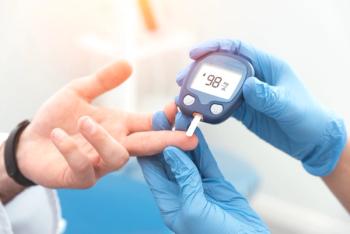
Angela Chun, MEd, MD, FAAP, identifies red flags in pediatric joint pain
Angela Chun, MEd, MD, FAAP, shares tips on distinguishing mechanical vs inflammatory joint pain in children, emphasizing timing, activity, and key physical exam maneuvers.
At the 2024 American Academy of Pediatrics National Conference & Exhibition, Angela Chun, MEd, MD, FAAP, a pediatric rheumatologist at Northwestern University, Lurie Children’s Hospital, shared valuable insights into evaluating musculoskeletal pain in children. Musculoskeletal pain is a common concern in pediatric practice, and Chun focused on distinguishing between mechanical and inflammatory joint pains.
Chun emphasized the importance of understanding the timing and duration of pain when evaluating pediatric patients. "The number one kind of factor in terms of the history is timing. Both in terms of how long has the pain been going on for, as well as when does the pain seem to come on or what makes it better or worse?" she explained. Specifically, persistent symptoms in the same joint for more than 6 weeks raise concerns for inflammatory arthritis, such as juvenile idiopathic arthritis (JIA). “The reason that we use that 6-week time period is because kids can have true arthritis for a lot of different reasons… but usually those tend to get better by, I would say, 4 weeks.”
Another key differentiating factor is the relation of pain to activity. According to Chun, arthritis symptoms, particularly morning stiffness, are more prominent after periods of inactivity, such as after sleep. She likened the condition to "a gel pack in your joints… When you are not moving for a long time, the gel kind of hardens. So, in the morning, they wake up super stiff… But as they move more and more, that gel kind of warms up a little bit and things get easier." In contrast, mechanical pain is more likely to worsen after activity, such as playing sports.
Chun also highlighted practical tips for pediatricians to detect arthritis during physical exams. One maneuver involves checking for jaw arthritis by asking the child to open their mouth wide enough to fit 3 fingers vertically. "If a kid is struggling or trying to cheat and go sideways, I pay a lot more attention to their jaw," she noted. Other helpful exam techniques include the prayer hand test to assess wrist range of motion and the pad-to-palm maneuver for evaluating finger flexibility.
Chun’s approach equips pediatricians with simple yet effective tools to assess joint pain, helping distinguish between mechanical and inflammatory causes, thereby improving diagnosis and treatment in pediatric patients.
Newsletter
Access practical, evidence-based guidance to support better care for our youngest patients. Join our email list for the latest clinical updates.














